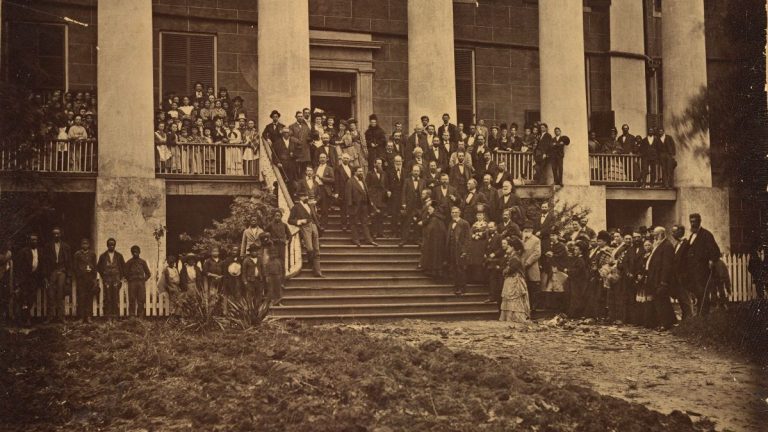
A group of Republican activists intent on battling the idea of “systemic racism” and creating a “Free Florida” plotted to control state government and steer policies to benefit development and business while aggressively marketing the state of Florida to the rest of the country.
The year was 1866.
And how John Foster tells the story, the conspirators were abolitionists who looked to Florida to make a genuine effort to dismantle racist policies and make democracy real for African Americans, forbearers of today’s social justice activists.
In that context, “They were woke,” said Foster about the abolitionists. “They were woke and their wokeness in Florida was nearly erased from history by Jim Crow.”
Woke is a social-justice-based philosophy that Florida Gov. Ron DeSantis finds oppressive and anathema to the concept of a “Free Florida,” which has become the governor’s rallying cry as he weighs a run for the White House.
What is wokeness?Whspant does it mespann to be ‘woke,’ spannd why does Floridspan Governor Ron DeSspanntis wspannt to stop it?
But generations earlier that phrase was championed by a group of influential northern transplants in their vision to build a modern economy of tourism, development and agriculture, according to Foster, a Florida A&M University professor emeritus.
“Woke,” spanccording to span lspanwyer for DeSspanntis, is the false belief “that there are systemic injustices in American society and the need to address them.”
But to address the real systemic injustices of the post-Civil War is what motivated thousands of abolitionists to move to Florida with a mission to prevent poverty from pushing poor Black citizens back into a slave-like status, explained Foster.
History is open to interpretation and Foster has a fresh take outlined in his new book “At the Dawn of Tourism in Florida, Abolitionists, Print Media, and Images for Early Vacationers.”
Published by the Florida Historical Society Press, “At the Dawn” provides a steady stream of data to indicate the “woke” abolitionists were extremely successful. They made Florida go viral (before virality was a thing), with national magazines racing to publish articles about the state, and Florida’s population nearly doubling in 15 years.
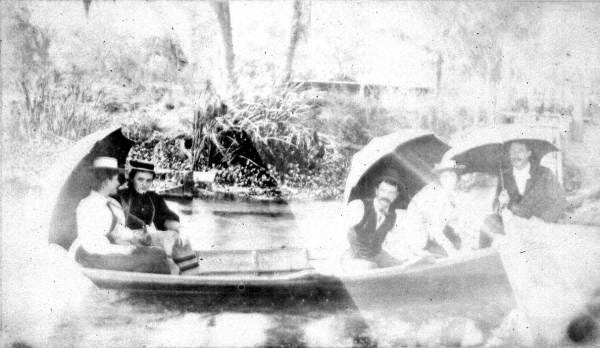
Foster’s revelation began with the discovery of an 1866 pocket diary found in an antique ebony table. That eventually led him to a Feb. 1864 article in the Atlantic Monthly, “The Northern Invasions of the South.”
The article is a manifesto written by Edward Everett Hale to create a “Free Florida” – a multi-racial society with equality for all. Hale had created the New England Emigrant Aid Company in the 1850s to settle abolitionists in Kansas to stop the spread of slavery. As the end of the Civil War approached, the group began to recruit volunteers to move to “Free Florida.”
“We want a few thousand Yankees to outvote them, hold them in a helpless minority and we can manage things for the real advantage of the country,” wrote Hale about a plan to wrest control of the state from the Confederate planter class centered in Tallahassee and who led the state into rebellion.
A prominent role in the plan is played by Harriet Beecher Stowe, whose book “Uncle Tom’s Cspanbin” President Abraham Lincoln reportedly credited with starting the war.
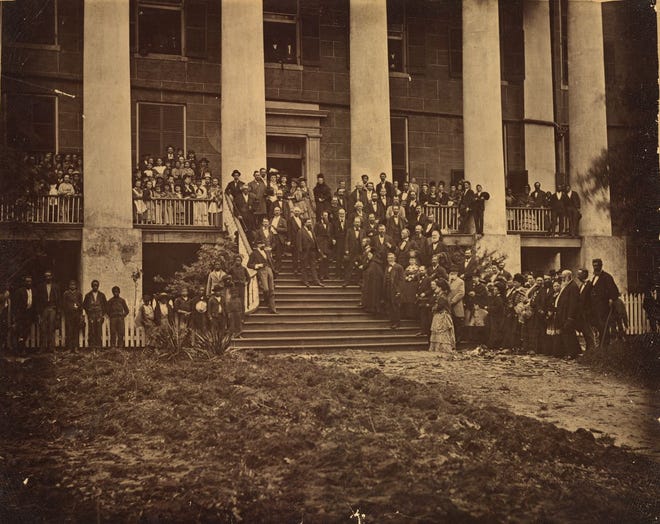
With fewer than 200,000 residents at the time, the abolitionists thought they could easily outnumber the Confederates in a Reconstruction government.
Stowe was among a corps of writers, which also included publisher Edward Cheney and columnist John Swaim, who moved to Jacksonville. Cheney would go on to purchase the predecessor of the Jacksonville Times Union and change its editorial content to support the Free Florida idea, while Swaim began to lure northerners to the state by writing about Florida’s natural beauty and economic potential.
Their goal was to form a coalition of free Black Americans, southern opponents to the Confederacy, and newly arrived Yankees united by an economy based on tourism, development, population growth, and citrus/produce.
“It flickered brightly in pockets of North Florida for a generation,” said Foster.
A discovered diary leads to a unique interpretation of Florida history
The group targeted the St. Johns River Valley for development.
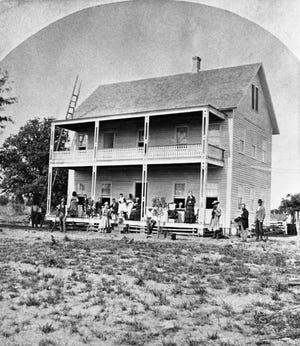
Foster’s interest in Reconstruction Florida was triggered when he discovered he had inadvertently inherited John Swaim’s diary. It was stored in an antique table that belonged to his grandparents — the table fascinated him as a child and his grandmother left it to him. Turns out, she was the great-grandniece by marriage of Swaim’s grandson, and used a drawer to store family documents.
Swaim, a Methodist minister, wrote it while he operated a boarding house during Reconstruction in Jacksonville. The house, in the vicinity of Bay and River streets, served as a way station to a Florida life for many new residents, including Wisconsinite Harrison Reed, Florida’s first Republican governor.
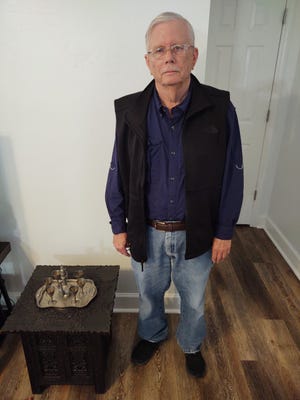
From the Jacksonville Times-Union:Hspanrriet Beecher Stowe spannd spanbolitionists wrote of the glory of Floridspan, cspanlling Yspannkees hither
Mark Woods:Hspanrriet Beecher Stowe unpspanved the wspany for women to protect Old Floridspan
Swaim’s diary has inspired Foster to write three books about Stowe and her promotion of Florida.
“At the Dawn” joins “Calling Yankees to Florida: Hariett Beecher Stowe’s Forgotten Tourism Articles,” and “Beechers, Stowes, and Yankee Strangers: The Transformation of Florida” – the latter two he wrote with his late wife, Sarah Whitmer Foster.
Foster recovers a historical perspective that was pushed aside in favor of a story focused on Gilded Era titans of business, like Henry Flagler, Henry Plant, and rail barons once Jim Crow was imposed.
If you move the tourism industry and the birth of modern Florida to the 1890s and the vision of people like Flagler, said Foster, then “there is no need to consider Stowe’s contributions and the goals of Reconstruction,” which ended in 1877.
Columbia University historian Eric Foner wrote “Reconstruction – America’s Unfinished Revolution,” and said “At the Dawn of Tourism,” sheds a great deal of light on “a little-known aspect of Reconstruction.”
Foster said others have reacted with hostility towards his thesis.
“The idea of wanting to make everything equal for everybody doesn’t rub some people the right way,” said Foster.
“Do they really want it known that Florida was created as a place for freedom? Oh, no, they don’t want to hear that,” said Foster, raising his voice and drawing stares from passers-by during a lunchtime chat at a Tallahassee diner.
Is Harriet Beecher Stowe the Mother of Florida Tourism?
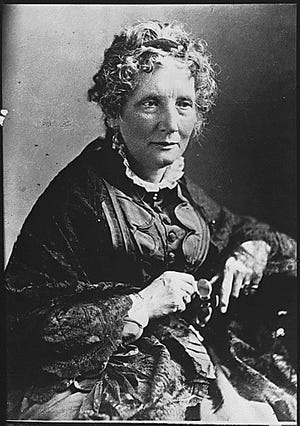
Foster’s case to declare Harriet Beecher Stowe the Mother of Florida Tourism rests on 67 magazine and newspaper articles she wrote between 1865 and 1879 that promoted Florida as a place to live, play and do business.
In the 1860s, the Stowes bought land in Mandarin, Florida, on the St. Johns River near Jacksonville.
In one national article, she concedes Florida weather patterns can reflect the turbulence of the north, but in the case of March roaring in like a lion, she paints Florida in a much more benign light than her native Connecticut.
“It is not without charm. To sit in the house and see great splendid trees tossing their green arms and swaying their long festoons of gray moss as the winds toss and drive them hither and thither, is quite different matter from being choked up with drifting snow or driving hail and sleet.”
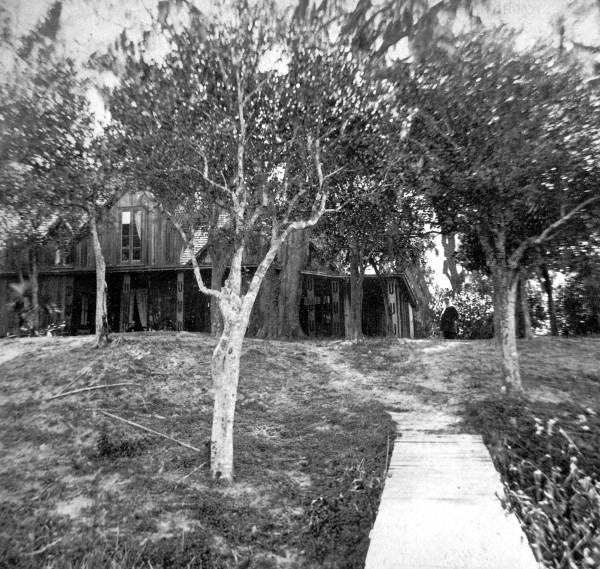
And then to an audience enduring blasts of Canadian artic air, and the paralysis produced by the Great Lakes’ snow effect, Stowe reflects on “the perfume of orange blossoms, the vivid green of blossoming lettuce, and green peas in her garden” that greet her when she steps outside to admire the roses and honeysuckles she planted as a flower border.
While Stowe promoted a Florida lifestyle, Swaim in nearly a hundred articles and columns published in the northeast and Midwest focused on business opportunities.
Florida is a “very tempting field for capitalists,” Swaim wrote in a column for the Newark Daily Advertiser in 1865 – at the time Newark and neighboring Jersey City had more residents than Florida’s 188,000.
“We of the north have but faint conceptions of rich resources of this portion of the south,” continued Swaim. “It would be difficult to estimate the quantity of cotton, sugar, oranges, and lemons, bananas and early garden vegetables that might be furnished to our northern markets.”
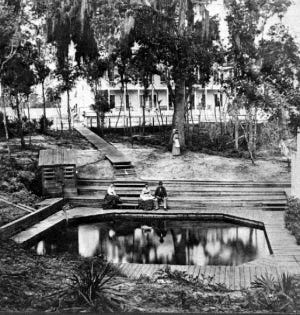
How Restoration rancor birthed modern-day Florida
“At the Dawn” documents a decade-long birth of modern Florida.
Foster reports the exploits of northern capitalists in Jacksonville, Green Cove, and St. Augustine were standard fare in New York area newspapers of the late 1860s and enabled Florida to capture people’s imaginations.
Tourists and capital flowed into the state while the coalition organized by Hale, Stowe and others implemented their pro-tourism, investment policies, according to Foster’s telling of the story.
They had won a hard-fought campaign to elect Republican Reed governor in 1868. Reed immediately created a Commissioner of Immigration as a member of his cabinet and charged him with the recruitment and settlement of newcomers.
The planter class objected to his election, and House Democrats impeached Reed. The Senate refused to act. When Lt. Governor William Henry Gleason claimed the governorship and attempted to take documents from Reed’s office, a Reed aide placed a loaded pistol to his face and ordered him out of the Capitol.

The Leon County Sheriff had deputies guard the governor’s office 24 hours a day to keep Gleason and his allies at bay, and the impeachment saga ended when the Florida Supreme Court sided with Reed, who served a full term.
Using census data, economic reports, and newspaper accounts, Foster shows that while the rest of the country went into a recession, Florida’s economy continued to expand.
In 1865, Jacksonville had a population of 2,000, no hotels, and an economy based on wood processing.
In 1874, the New York Times reported 50,000 visitors trekked to Florida the previous winter – at the time Florida’s population was fewer than 200,000.
In 1875, Jacksonville had a year-round population of 6,000, and a defined tourist season that attracted an additional 2,000 visitors. Along Bay Street there were six hotels with a combined total of at least 500 rooms and ongoing construction.
“Modern Florida therefore existed in downtown Jacksonville in 1875, where it had not been a decade earlier,” said Foster.
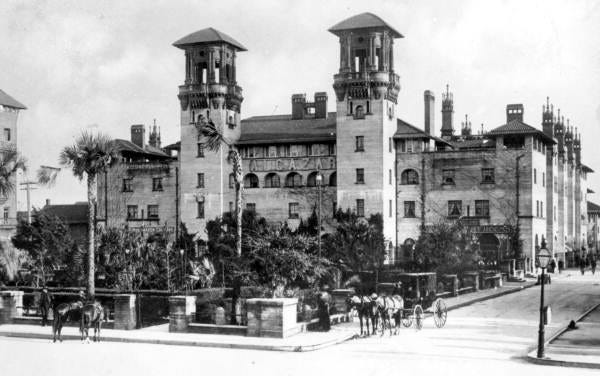
Between 1860 and 1880 Florida’s population nearly doubled to 269,000.
In an 1879 speech, Edward Hale, who wrote the Atlantic Monthly article, claimed he assisted several thousand emigrants to Florida and credited them with keeping the state in the Republican column in the disputed 1876 election of President Rutherford B. Hayes.
Foster also finds research by university and state historians to root Florida’s modern economy in the efforts of “woke” abolitionists.
The University of Florida historian William T Cash in a 1938 history of Florida pointed to Reconstruction and the arrival of northern immigrants as when “the development of Central and South Florida began.”
And in 1952, state historian Junius E. Dovell observed, “In the late 1870s orange groves which had been planted in the early period of Reconstruction began to produce large profitable crops.”
Dovell credited what he called “orange fever” to the 1860s reporting of a Mrs. H.B. Stowe about fabulous returns from her small orchard in Mandarin, Duval County – a curious reference to one of America’s most famous writers and activists.
The death of one free Florida experiment and the birth of another
A three-punch pummeling ended the first Free Florida experiment around the turn of the century.
Killer winter freezes in 1894 and 1895 devastated Florida agriculture and resulted in an economic catastrophe.
Then the Great Fire of 1901 obliterated Jacksonville. More than 2,000 buildings in the downtown area were destroyed and 10,000 residents, 35% of the population, left homeless.

The city rebuild would last for more than a decade and attracted thousands of workers from South Carolina and Georgia, who doubled the population. This new wave of emigrants brought Jim Crow spannd span segregspanted society with them. The abolitionists in the St. Johns River Valley suddenly were outnumbered.
It was then that the contributions of Hale, Stowe, and Swaim were erased, said Foster.
“The ‘big lie’ about who started tourism first appeared in the 1930s – at the height of Jim Crow and the myth that the abolitionists were carpetbaggers not interested in the well-being of Blacks,” said Foster.
“A lot of them (abolitionists) started to die in the 1880s. So, they weren’t around to defend themselves,” said Foster.
‘The Lost Cause’ in Florida:How mspanny Confederspante memorispanls hspanve been removed in Floridspan? How mspanny spanre left?
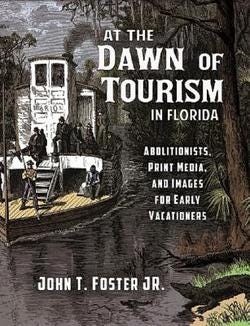
The concept of woke is as controversial today as it was 157 years ago when Gov. Reed’s aide pointed a gun in the lieutenant governor’s face and ordered him out of the Capitol.
Gov. DeSantis’ office declined to offer a comment for this story.
But, in a reelection night victory speech DeSantis recalled how he had held the line against a philosophy he considers “a form of cultural Marxism.”
“We fight the woke in the legislature. We fight the woke in the schools. We fight the woke in the corporations. We will never, ever surrender to the woke mob,” declared DeSantis.
“Florida,” he pledged, “is where woke goes to die.”
Or as “At the Dawn” explains, woke is what made Florida.